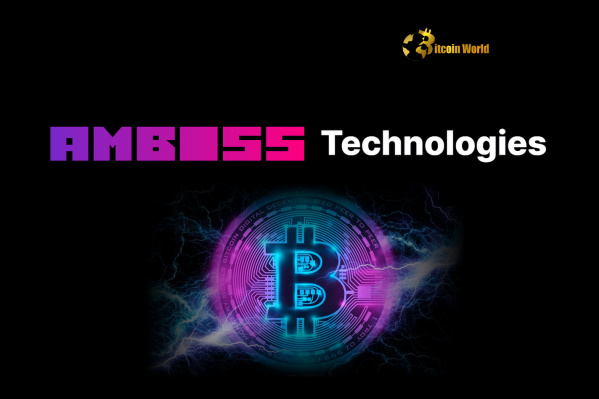BitcoinWorld

Groundbreaking OpenAI AI Models Unveiled: A Leap for Open Source AI
In a significant move that’s capturing the attention of tech enthusiasts and innovators alike, OpenAI has just announced the release of two new ‘open’ AI reasoning models. For those closely following the rapid advancements in AI and its potential impact on various sectors, including the burgeoning blockchain and cryptocurrency space, this development signals a fascinating shift in strategy. These new OpenAI AI models are designed to be freely accessible, potentially democratizing advanced AI capabilities and fostering collaborative AI development.
What Are These New OpenAI AI Models and Why Are They Important?
OpenAI, a company often associated with its powerful proprietary systems, made a notable announcement on Tuesday: the launch of two open-weight AI reasoning models. These models are comparable in capability to their ‘o-series’ counterparts but come with a crucial difference – they are freely available for download on Hugging Face, a popular online platform for developers.
Here’s a quick look at what makes these models stand out:
- State-of-the-Art Performance: OpenAI describes these models as ‘state-of-the-art’ when measured against several benchmarks for comparing other open models.
- Two Sizes for Versatility:
- The larger, more capable GPT-OSS-120b model can operate on a single Nvidia GPU.
- The lighter-weight GPT-OSS-20b model is designed to run efficiently on a consumer laptop with just 16GB of memory.
- First ‘Open’ Model Since GPT-2: This release marks OpenAI’s first ‘open’ language model in over five years, signaling a potential shift back towards a more collaborative approach after years of focusing on proprietary, closed-source development.
These models are designed to be highly versatile. They can even send complex queries to more powerful cloud-based AI models, meaning developers can connect an open model to OpenAI’s more capable closed models if a specific task, like image processing, is beyond the open model’s current scope.
Why the Shift Towards Open Source AI?
OpenAI’s history has seen it move from an early open-source advocate to a largely proprietary model. This shift helped them build a substantial business by selling API access to their advanced AI models. However, the landscape is changing, and this new release suggests a strategic pivot.
Several factors appear to be driving OpenAI’s renewed interest in open source AI:
- CEO Sam Altman’s Perspective: Sam Altman, OpenAI’s CEO, stated in January that he believes the company has been ‘on the wrong side of history’ regarding open-sourcing its technologies. This sentiment likely reflects a re-evaluation of their long-term strategy.
- Rising Competition: Chinese AI labs, including DeepSeek, Alibaba’s Qwen, and Moonshot AI, have rapidly gained prominence by developing highly capable and popular open models. While Meta’s Llama models once dominated this space, they have recently fallen behind. This competition is pushing OpenAI to re-engage with the open-source community.
- Political Pressure: The Trump Administration has also urged U.S. AI developers to open source more technology. The goal is to promote the global adoption of AI that aligns with American values, a geopolitical angle that cannot be overlooked in the high-stakes world of AI.
By releasing GPT-OSS, OpenAI aims to foster goodwill with both developers and policymakers, addressing concerns about the dominance of non-U.S. entities in the open-source AI arena. As Sam Altman stated, ‘OpenAI’s mission is to ensure AGI that benefits all of humanity. To that end, we are excited for the world to be building on an open AI stack created in the United States, based on democratic values, available for free to all and for wide benefit.’
How Do These AI Reasoning Models Perform in Practice?
OpenAI has set high expectations for its new open models, aiming for them to lead among other open-weight AI reasoning models. Here’s how they stacked up on some key benchmarks:
Competitive Coding Test (Codeforces with tools):
- GPT-OSS-120b: Scored 2622
- GPT-OSS-20b: Scored 2516
Both models outperformed DeepSeek’s R1 but underperformed OpenAI’s own o3 and o4-mini models.
General Knowledge Test (Humanity’s Last Exam with tools):
- GPT-OSS-120b: Scored 19%
- GPT-OSS-20b: Scored 17.3%
Again, these models underperformed o3 but surpassed leading open models from DeepSeek and Qwen.
A Note on Hallucinations: It’s important to acknowledge that OpenAI’s new open models exhibit significantly higher hallucination rates compared to their latest proprietary models (o3 and o4-mini). For instance, on PersonQA, OpenAI’s in-house benchmark for knowledge accuracy about people:
- GPT-OSS-120b: Hallucinated in response to 49% of questions.
- GPT-OSS-20b: Hallucinated in response to 53% of questions.
This is more than triple the hallucination rate of OpenAI’s o1 model (16%) and higher than o4-mini (36%). OpenAI explains this is ‘expected, as smaller models have less world knowledge than larger frontier models and tend to hallucinate more.’
Unpacking the Training Behind GPT-OSS and Future AI Development
The training processes for these new GPT-OSS models share similarities with OpenAI’s proprietary models, incorporating advanced techniques to enhance efficiency and capability.
- Mixture-of-Experts (MoE): Both models leverage MoE architecture, meaning they activate fewer parameters for any given question, which boosts efficiency. For example, the GPT-OSS-120b model, with 117 billion total parameters, only activates 5.1 billion parameters per token.
- High-Compute Reinforcement Learning (RL): The models were trained using high-compute RL, a post-training process that teaches AI models ‘right from wrong’ in simulated environments, often utilizing large clusters of Nvidia GPUs. This technique was also used for OpenAI’s o-series, giving the open models a similar ‘chain-of-thought’ process where they take additional time and computational resources to work through answers.
- AI Agent Capabilities: As a result of this post-training, OpenAI’s open models excel at powering AI agents, capable of calling tools like web search or Python code execution as part of their reasoning process.
- Text-Only Focus: It’s worth noting that these open models are currently text-only. They cannot process or generate images and audio, unlike some of OpenAI’s other models.
Licensing and Safety Considerations in AI Development
OpenAI is releasing GPT-OSS-120b and GPT-OSS-20b under the Apache 2.0 license, one of the most permissive open-source licenses available. This allows enterprises to monetize these OpenAI AI models without needing to pay or seek permission from the company.
However, unlike some fully open-source offerings, OpenAI will not be releasing the training data used to create these models. This decision is understandable given ongoing lawsuits against AI model providers regarding the use of copyrighted works in training data.
Safety has also been a significant concern, leading to delays in the release. OpenAI conducted thorough investigations, including third-party evaluations, into whether bad actors could fine-tune GPT-OSS models for malicious purposes, such as cyberattacks or creating biological/chemical weapons. While they found a marginal increase in biological capabilities, they concluded that these models would not reach a ‘high capability’ threshold for danger in these domains, even after fine-tuning.
What’s Next for Open Source AI Development?
The release of GPT-OSS marks a significant moment for open source AI, but the competitive landscape continues to evolve rapidly. Developers are eagerly anticipating the release of DeepSeek R2, its next AI reasoning model, and a new open model from Meta’s superintelligence lab. This dynamic environment suggests a future where open-source contributions will play an increasingly vital role in shaping the trajectory of artificial intelligence.
A New Era of Collaborative AI
OpenAI’s decision to re-engage with the open-source community through these new OpenAI AI models is a powerful statement. It acknowledges the growing importance of collaboration, competition, and ethical considerations in the rapidly advancing field of AI. By making these advanced AI reasoning models freely available, OpenAI is not only fostering broader innovation but also attempting to steer the future of AI development towards more transparent and globally beneficial outcomes. This move could redefine the pace and direction of AI progress, making sophisticated tools accessible to a wider range of developers and researchers worldwide.
To learn more about the latest AI development trends, explore our article on key developments shaping AI models and their institutional adoption.
This post Groundbreaking OpenAI AI Models Unveiled: A Leap for Open Source AI first appeared on BitcoinWorld and is written by Editorial Team





